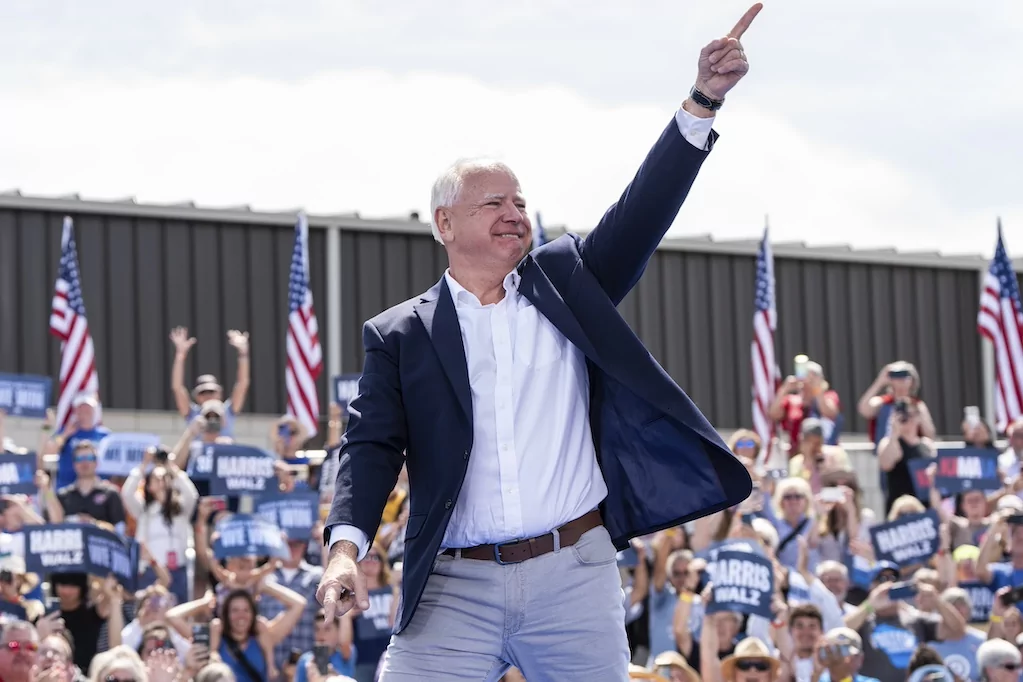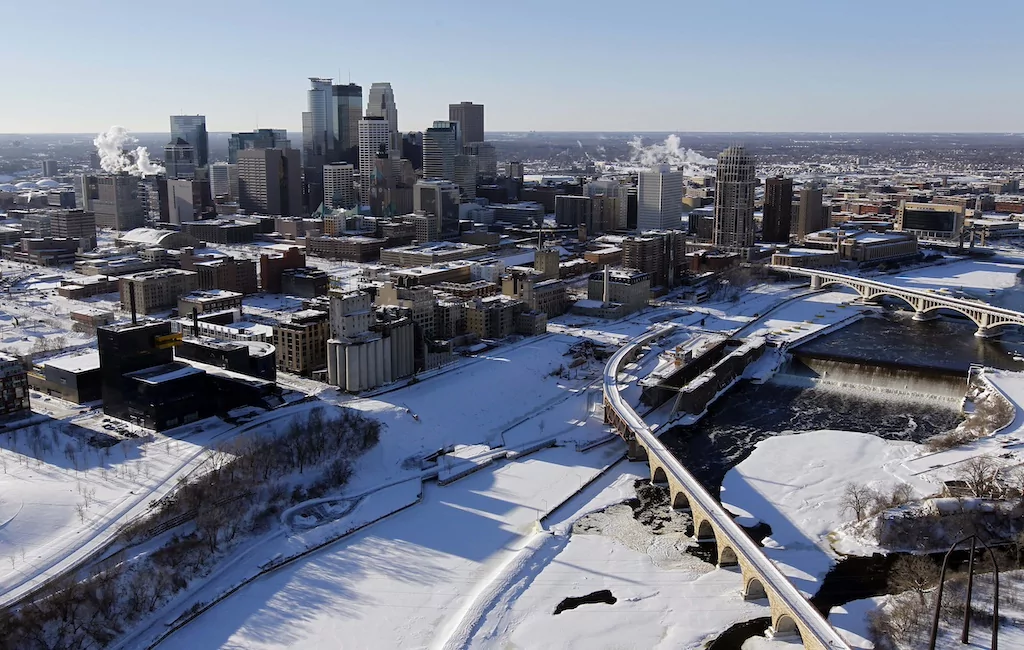
Minnesota’s oftentimes progressive politics and blue-leaning nature differ from that of the rest of the Upper Midwest.
Neighboring Wisconsin is one of several key battleground states, which could sway the election, and Nebraska and both Dakotas remain red. Iowa was once a swing state, but has moved to the right in recent years. Yet, Minnesota has remained to be a truly Democratic state.
According to University of Wisconsin-Madison professor Mike Wagner, who grew up in Minnesota and has lived in many midwestern states, Minnesota has a unique combination of being more urban, more racially diverse, having more job opportunities, and a history of progressivism that positions the state different than the rest of the upper Midwest.
“From a communication standpoint, from a manufacturing standpoint, from a farm standpoint, from a turnout standpoint, Minnesota has been a stronger haven for Democrats than some other places in the Midwest,” Wagner told the Washington Examiner.
Demographics of the state
Minnesota has the second-highest population of Somalians outside of Somalia, which contributes to its racial and religious diversity. According to data from the U.S. Census, Minnesota has a diversity index of 40.5%, while Wisconsin has a diversity index of 37% and Iowa has 30.8%.
“80% of [Minnesota] is white, whereas in Wisconsin it’s 83%. That’s not a huge difference, but a difference between half a percent and three and a half percent in the election, is quite a big difference,” Wagner said.
“We’ve seen Minnesota elect more diverse candidates to office than in a lot of other places. So like, Ilhan Omar is a member of Congress, the lieutenant governor is Native American … and so the diversity has also been reflected in the makeup of lawmakers, in a way that isn’t as true as it is in other Midwestern states,” Wagner said, noting that there is diversity in other Midwestern states “just not as much.”
Since Gov. Tim Walz (D-MN) was thrown into the national spotlight Tuesday, when Vice President Kamala Harris announced him as her running mate, progressive policies he’s greenlit through the Democratic-controlled Minnesota state house have also come into the spotlight.

Democrats took control of both chambers of the Minnesota legislature just two years ago, and since then, Walz and state lawmakers have transformed the state. They’ve provided universal free meals to school children, expanded reproductive access, and legalized marijuana, among other Democratic policies.
“There’s nowhere quite like Minnesota right now,” Walz said during his State of the State address earlier this year. “Together, we’re not just showing the people of Minnesota what we’re capable of in delivering on our promises. We’re showing the entire American people just how much promise is contained in that progressive vision held by so many people.”
Farm vote, not rural vote
Wisconsin and Minnesota are perhaps the most frequently compared states of that in this region, but Wisconsin has moved somewhat more Republican than its neighbor. While both states have large rural populations, Wisconsin’s remains more rural while Minnesota’s rural population is largely farmers.
“What is missing in Wisconsin and what is present in Minnesota is the farm vote,” Jonathan Kasparek, a professor at the University of Wisconsin-Milwaukee told the Star Tribune.
Because Minnesota’s Democratic Party, the Democratic Farm Labor Party, literally has the word “farm” and oftentimes advocates for farmers and laborers, they have been able to hang onto a bit more of the farm vote than other midwestern states have, according to Wagner.
“The farm vote and the rural vote are different. A majority of rural people are not involved in ag at all,” said Kasparek. “Republicans have been able to attract those voters primarily by playing on cultural issues, pro-life, anti-elitist sentiment.”
The Minnesota Republican Party has also had financial troubles for years, which has allowed DFL organizers to reign in a vote Republicans could typically capture. As of June, the DFL has about $2 million in its state campaign account while the Minnesota GOP has about $78,000.
At one point in the race, former President Donald Trump was making the case that Minnesota was in play as enthusiasm surrounding President Joe Biden’s campaign was waning.
In 2016, Hillary Clinton won the state by more than 44,000 votes, but in 2020, Biden expanded Clinton’s margin, winning Minnesota by seven percentage points or over 230,000 votes.
With Walz, who remains popular in the state, and the fact Minnesota has not voted for a Republican for president since 1972, it is unlikely Trump would win the state.
“I don’t know that it would have been a place that would have been a wise investment of resources from the Trump campaign, as compared to Wisconsin, Pennsylvania, Michigan, Georgia, Nevada, Arizona,” Wagner said.
Job opportunities
Minnesota did not develop as many manufacturing jobs as states like Michigan, Ohio, and Wisconsin did during the 20th century, so during the 2008 Great Recession, Minnesota also lost far fewer manufacturing jobs than other Midwestern states like Ohio and Michigan did because they did not exist to begin with, according to the Star Tribune.
Those states, which held the ‘blue wall’ for years, flipped Republican during the 2016 election when Trump made campaign promises to bring back those types of jobs. Because Minnesota was not hit as hard by those events, they didn’t flip like their upper Midwest counterparts.
Wagner also pointed to an increase in conservative talk radio, which is more popular with Wisconsin residents than Minnesota.
“Wisconsin has had a bit of a decrease in manufacturing jobs, and during that same time period, conservative talk radio grew in strength, and so a decline in jobs that are often filled by more left leaning voters, plus a communication environment that was telling Wisconsinites that Democrats were to blame for their problems. Both, I think, had something to do with that,” Wagner said.
The state is also more urban than other Midwestern states with the Twin Cities of Minneapolis and St. Paul and surrounding suburbs being more than half of the population of the state. In recent years, urban population centers have grown more educated and more liberal and Minnesota is no outlier to that trend.

CLICK HERE TO READ MORE FROM THE WASHINGTON EXAMINER
“It’s more folks who’ve maybe moved from other parts of the state to be around the Twin Cities who are a little bit more left-leaning, whereas the suburbs around Milwaukee have been more Republican,” Wagner said.
Minnesota is also home to the headquarters of more than a dozen well-known Fortune 500 companies, including Target, United Health, U.S. Bank, General Mills, and Xcel Energy. The state is also home to the best hospital system in the country, the Mayo Clinic.






